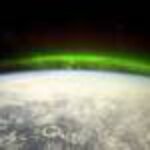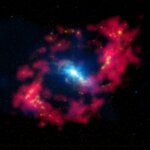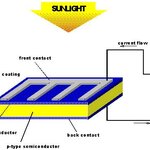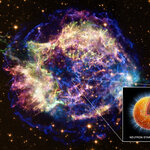Space

Last month, an article that had caused something of a buzz in science circles since November was published in the journal Icarus. John Matese and Daniel Whitmire, physicists at the University of Louisiana at Lafayette, wrote a paper(1) speculating about the existence of an unknown planet, a monstrous binary companion to our Sun bigger even than Jupiter.
The problem, other than the usual hype by places like Huffington Post along with mainstream media outlets, was this planet would have to be in the Öpik-Oort Cloud , which is itself a hypothesis.
What separates this…

This is a short note to draw your attention to Jim Kaler’s recent page covering ADVANCES IN ASTRONOMY for 2009 – 2010.
It’s not very long, but the latest in everything from the Moon to the whole observed Universe is summarized neatly by a master of the subject, and is well worth a read.

Last year, the NPR sound engineer said I was the first scientist to really nail what sonification is. In my 365DOA podcast, I am joined by Matt and Hai-Ting of ScopesMonkeyChoir.com in the continuing
saga of just why the heck I am launching a musical satellite, and
what can you do with an orbiting musical instrument.AlexDIY satellite news every Tuesday here and at Project CalliopeGeneral space science every Friday at the Daytime Astronomer

A new composite image from NASA shows the central region of the spiral galaxy NGC 4151...and, well...if you have seen the film versions of "The Lord of the Rings" you know what it looks like.
So do astronomers and, so, "Eye of Sauron" it is.
NGC 4151 is located about 43 million light years away from the Earth and is one of the nearest galaxies which contains an actively growing black hole. Because of this proximity, it offers one of the best chances of studying the interaction between an active supermassive black hole and the surrounding gas of its host galaxy. Such interaction, or "…

And I thought my to-do list was long... For those not suffering from feline-induced insomnia and trolling the InterGoogles for news,1 NASA has its marching orders thanks to a new report, "Vision and Voyages for Planetary Science in the Decade 2013-2022."
The National Academy of Science's National Research Council formed a Committee on the Planetary Science Decadal Survey reviewed the status of planetary science in the U.S. and developed a comprehensive strategy to continue those advances in the coming decade.2 Top of list are bringing back sedimentary rocks from Mars (instead of those useless…

Sunspots are dark spots on the sun, at least as we see them, caused by magnetic activity in the plasma on the surface of Sol.
For 200 years scientists have known that they occasional disappear but no one was sure exactly why. A trio writing in Nature say they have solved the mystery and now can even predict the next time. Piet Martens, Dibyendu Nandi and Andres Munoz-Jaramillo say they have discovered why sunspots were missing from 2008 to 2010, which coincided with an extra-long "solar minimum" and unusually weak magnetic fields at the sun's poles. The fields are ordinarily…

Greetings, true believers.
I've not let a week pass yet without some tidbit of amateur satellite relevance, and this week is no exception. Being pleasantly mired in work-work, I'll be necessarily brief with this update.
I broke my first solar cell today. Soldering the solar panels requires I learn a new soldering technique, reflow soldering, where you paint solder flux then just heat the entire material. Breaking the cell was simply due to the fragility of the cell, not the new technique. Thankfully, IOS provides a few extra cells for this reason. I (as always)…

Supernova remnant Cassiopeia A (Cas A) is the remains of a massive star 11,000 light years away that would have appeared to explode about 330 years ago as observed from Earth.
Neutron stars like Cas A contain the densest known matter that is directly observable. One teaspoon of neutron star material weighs six billion tons. The pressure in the star's core is so high that most of the charged particles, electrons and protons, merge resulting in a star composed mostly of uncharged particles called neutrons.
NASA's Chandra X-ray Observatory has discovered the first direct evidence for a…

A music project has cropped up that is very much like Project Calliope, if you swap out 'one man show' and replace it with 'crowdsourced'. The core concept is Calliope's "convert space to music via detectors and send to ground for anyone to remix", and (perhaps due to the Tubesat design limitations) very similar in terms of approach, method and focus as well as intent. Innovation? Flattery?
Last week I said the mission of Calliope is that "hearing the levels and variety of activity in the ionosphere in real or
near-real time, as ambient sound, will help people get an…
Around the pink- and red-hued madness of overpriced flowers and heart-shaped everything that is Valentine's Day, even a rocket man1 needs a little love.2 Unfortunately for NASA, the Stardust spacecraft beamed down an unexpected photo of its intended Valentine, the potato-shaped comet Tempel 1. (And no wonder - what girl wants to be photographed if she's told she has the figure of a potato?)
Instead of a space age love song3, scientists received the a photo of a tiny speck:
Going to a wide-zoom lens doesn't really add much to the context, but here's a photo from about 3 days before the star-…